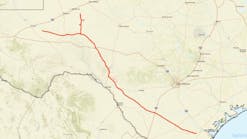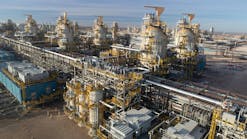US natural gas prices should jump sharply in the first quarter as demand jumps in the face of limited supply.
Marshall Adkins, managing director of Raymond James & Associates Inc., Houston, made that prediction at an International Association of Drilling Contractors conference in Houston earlier this month.
Supply concerns
Adkins and other speakers warned of industry's limits in meeting US natural gas demand, both from onshore and Gulf of Mexico fields. "We may need $4/Mcf or higher gas prices to even stabilize Gulf of Mexico production," he said.
Adkins said gulf production will decline because new prospects are smaller than before. Meanwhile, he said industry is drilling deeper—40% deeper since 1983—and thus setting a trend of higher costs per well.
Despite a tripling of rig activity in the past 2 years, he said US gas production is slipping anyway, and "in the next 5 years, it may go down big."
Producer views
Craig Clark, president and COO of Forest Oil Corp., Denver, expects natural gas prices to remain near $3/Mcf for some time.
He said industry's drilling performance has been generally poor in recent years as the focus shifts to deeper and harder-to-tap reservoirs. "We have to increase our drilling efficiency."
Paul Hilton, TotalFinaElf E&P USA Inc.'s senior vice-president for offshore, agreed that industry's prospects in the gulf are getting much smaller: "We are going deeper in water and drilling depths and deeper in risk when we do."
Another problem, he said, is that some of those prospects are 100 miles from existing infrastructure, requiring a "high dollar investment per barrel of oil equivalent."
Hilton said federal royalty relief "improves the economics tremendously." He urged more industry-government cooperation and more coordination among offshore operators on infrastructure issues.
Kevin Lacy, a ChevronTexaco Corp. well engineering and operations advisor, said that despite the impact of commodity prices on development decisions, large producers first consider the potential production rates and reserves of gulf prospects and then the potential prices.

